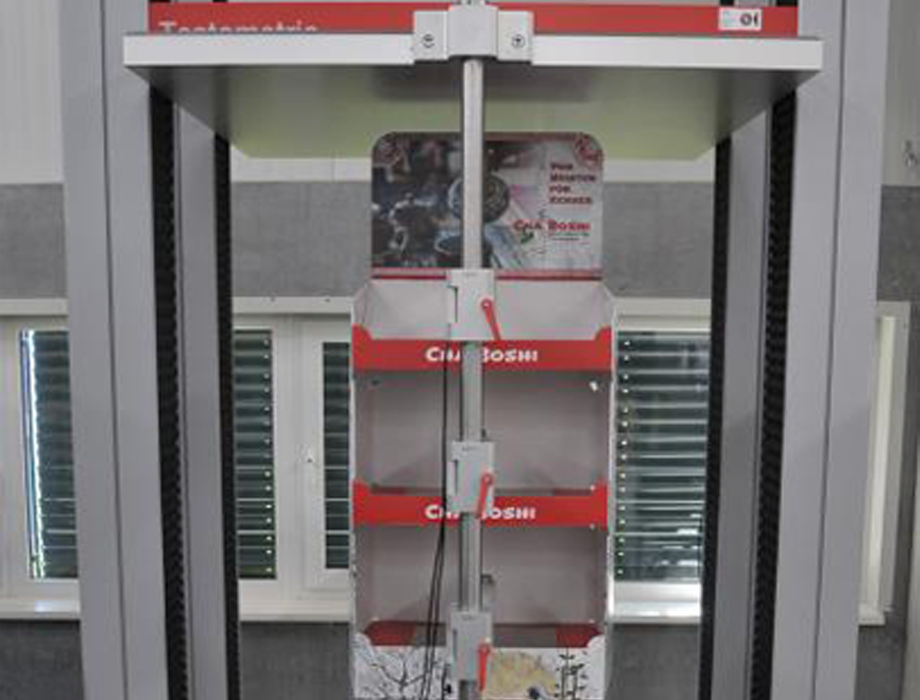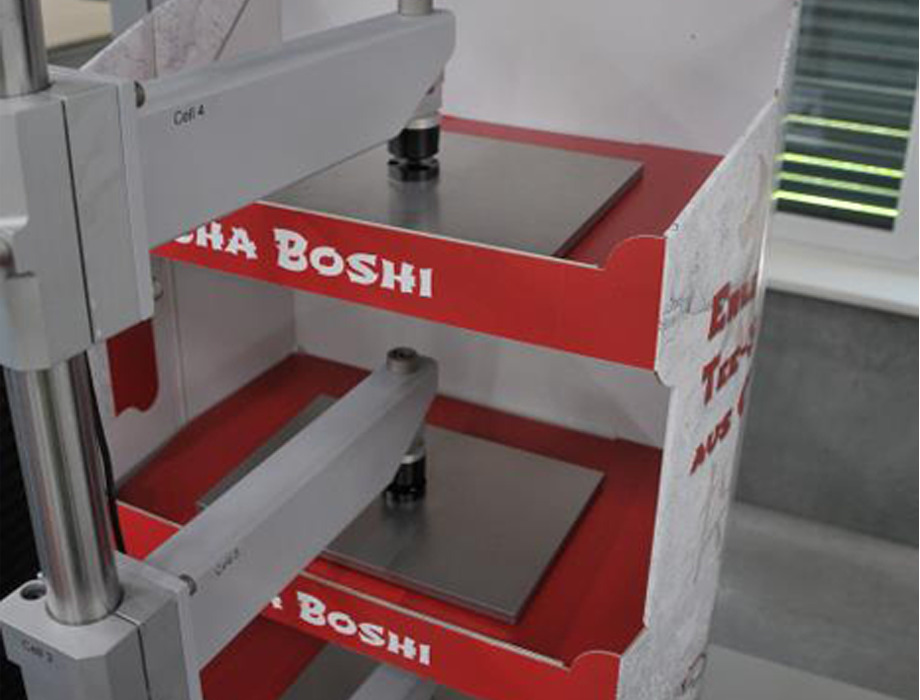DS Smith First in Industry to Present BCT Test Machine for Displays Safe and Fast
Be it during transport or on the retail sales floor - displays have to withstand a great deal of pressure.
In order to be able to reliably anticipate the future loads already in the development phase, DS Smith has developed a BCT test machine for displays and multi-part packaging, which is the first across its industry, allowing nearly any type of construction to be tested for weak points or over-specifications. This means that cost and time-consuming transport and laboratory tests are reduced significantly for the customers. This not only shortens time to market, but also reduces the complexity of some display constructions many times over.
Top Performance at Point of Sale
Displays are as different as the products they present in retail space. They vary in the thickness of the material, the number and inclination of the shelves, the weight and the type of assortment. Conventional BCT test methods for packaging meet their limits here. In order to be able to use empirical data to underpin the values gained by experience on the load-bearing capacity of the display components and to accelerate the test processes in total, DS Smith has developed a special testing machine for displays and multi-part packaging.
Designs with two to a maximum of five display levels can be tested, even if they vary in their base areas or are arranged with an inclination. The respective sensors on the individual arms of the device measure exactly where the increase in force is greatest, or the material or construction can no longer withstand the load. The machine can simulate the different loads in the case of mixed assortment, as well as the loads which the ready-made displays are exposed to during their transport to the retail space. “The testing device developed by us is unique in its kind in the industry,” stresses Tobias Häfner, Sales Director Consumer Packaging & Display at DS Smith. "This machine allows us to examine almost all common display variants on the market and ensure a consistently high and reproducible quality."

Under pressure - DS Smith is testing the performance of point-of-sale displays at its test centre.
With this new test centre, DS Smith provides its customers with a real speed gain and thus reduces their time to market. "Laboratory tests in external institutions are not only costly, but also time-consuming," stresses Häfner. “Through the analyses, the branded goods manufacturers receive meaningful values about the stability of their displays already during the design and development process.” This not only allows them to limit their own tests to random samples later on, says the display and packaging strategist. At the same time, the simulations at the DS Smith test centre also significantly reduce the usual transport tests on the road. “Since we already know the exact crash value of each individual shelf in an early stage of display development, we can also eliminate unnecessary fillers, bars or supports within the structure.” This yields real efficiency benefits in the production, storage and assembly of the displays.

The testing machine, which is unique across the industry, allows DS Smith to examine displays with 2 to 5 shelves, as well as multi-part packaging, thus ensuring a perfect point-of-sale performance.
"In particular, the major brand manufacturers are looking for partners to help them optimise the entire product life cycle," says Häfner. "We deliver everything from a single source: from the first creative consultation to the design, development and testing of the displays and the production of small or large series."